Long before Apple created the Vison Pro, long before Meta’s Horizon Worlds was a glint in Mark Zuckerberg’s MetaQuest headset, and long before the world had ever heard of a Sandbox or Decentraland, there was Second Life; the original social metaverse.
On its 20th anniversary, MetaNews revisits the virtual world to see what lessons can be learned from the first great metaverse hype wave.
Remembering Second Life
Launched on June 23, 2003, Second Life ambitiously promised to deliver a brave new digital world and a better life for its users. For a hot minute, it seemed like it might actually succeed. Second Life swiftly became a cultural phenomenon, garnering significant press coverage from mainstream media outlets including the BBC and CNN.
Second Life also captured the attention of major corporations that established a presence in its virtual world. Big corporate brands including Sony, Reebok, BMG Music, and Reuters all set up shop in Second Life.
At or around the height of its popularity in November 2006 IBM’s CEO Sam Palmisano addressed 5,000 IBM employees in Second Life. As Bloomberg reports at the time Palmisano told attendees “I have my own avatar.”
To be sure that the audience appreciated the significance of the moment Palmisano said the words again.
“I have my own avatar.”
Second Life was a big deal.
Founder Philip Rosedale went on to hail Second Life as the start of “something very big,” but while the initial signs all seemed positive for Rosedale and his creation, the immersive social network failed to sustain its upwards trajectory. Second Life peaked in the late noughties with around a million monthly users – for comparison Fortnite has around 80 million MAU – before numbers declined and the virtual world eventually slipped out of the public consciousness.
But Second Life didn’t just die. In fact, Second Life continues to soldier on, largely out of the limelight.
Return to Second Life
One of the first things that strikes me about Second Life is how easy it is to sign up for an account compared to other virtual worlds. Second Life only asks for a few personal details such as name and date of birth before directing you to choose from a number of pre-selected avatars.
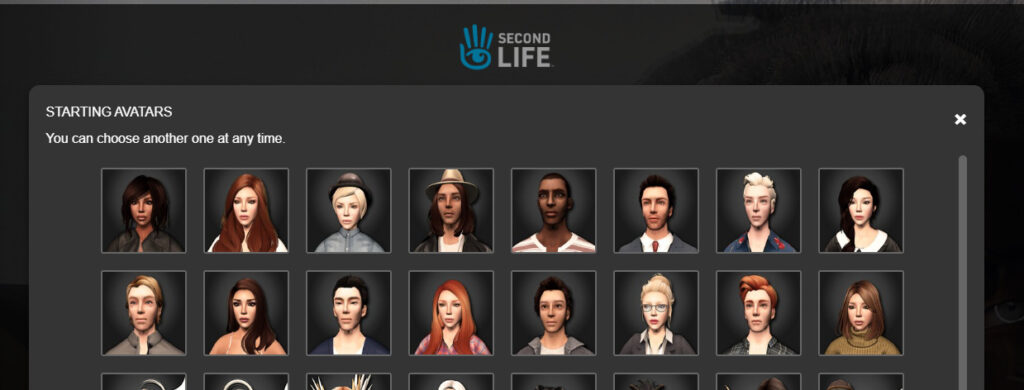
There are a set number of avatars to choose from during the sign-up process. (Source: Second Life.)
It’s a far cry (and welcome relief) from the personal documentation and liveness checks required by some modern metaverses.
Of course, it’s never all good news, and the minute the sign-up process is completed Second Life directs me to download its client. At 136MB this is a relatively small download, but it is a source of ongoing frustration that most metaverse companies fail to disclose the download requirements before the sign-up process beings.
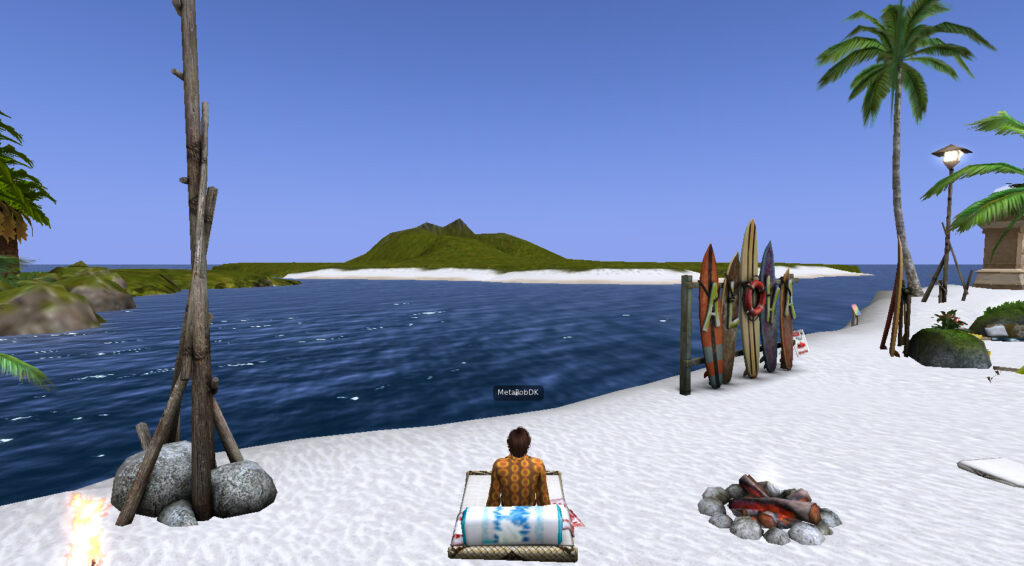
Relaxing at the beach in Second Life.
Once inside Second Life I find myself at a tropical beach location. I am directed by green arrows to explore the grounds of the island. As I explore the system teaches me various skills along the way. I learn to walk, run, sit and lie down, and even to fly. It is one of the most intuitive metaverse experiences I’ve ever had, and I soon find myself able to accomplish a number of tasks with ease.
Of course, no metaverse experience would be complete without something truly bizarre happening. In Second Life this occurs fairly early on when I stumble across a giant bat that invites me to jump on its back and fly around. I duly oblige, and it is quite fun exploring the tropical island from my batwing.
When I eventually land my bat friend disappears and I never see it again. Later, as I explore further I find myself missing the bat.
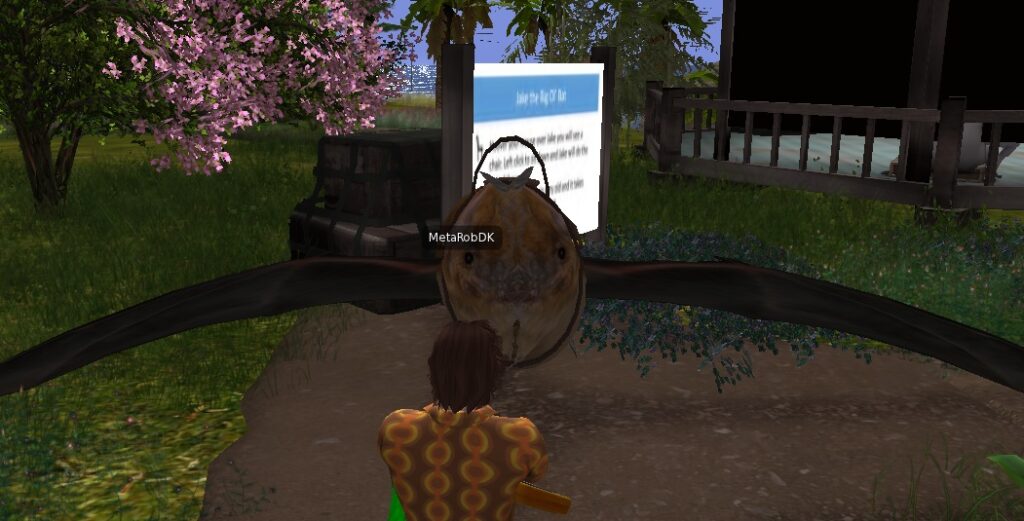
This is my bat friend. I call him Christian.
Other locations are available
Exploring the island further I begin to wonder why so many metaverse experiences strongly feature remote, tropical, sunkissed locations. Is it because this environment fulfills some common aspirational dream that many of us hold – or did Second Life simply set an island paradise trend that every other metaverse copied?
If Second Life and other metaverses represent an idealized lifestyle we all aspire to, why do so many of us choose to live our actual lives in cramped and dirty cities?
Second Life is more than just a tropical island simulator, however, and other locations are available. During my time within the simulator, I explore forests and cities, dark fantasy realms, and sci-fi worlds that take inspiration from Star Trek or Blade Runner. This is pure geek bait.
Each world is different not only in the visual sense but sonically too. That goes for both sound effects and music. In one location I find myself listening to 90s rock, and in another trance.
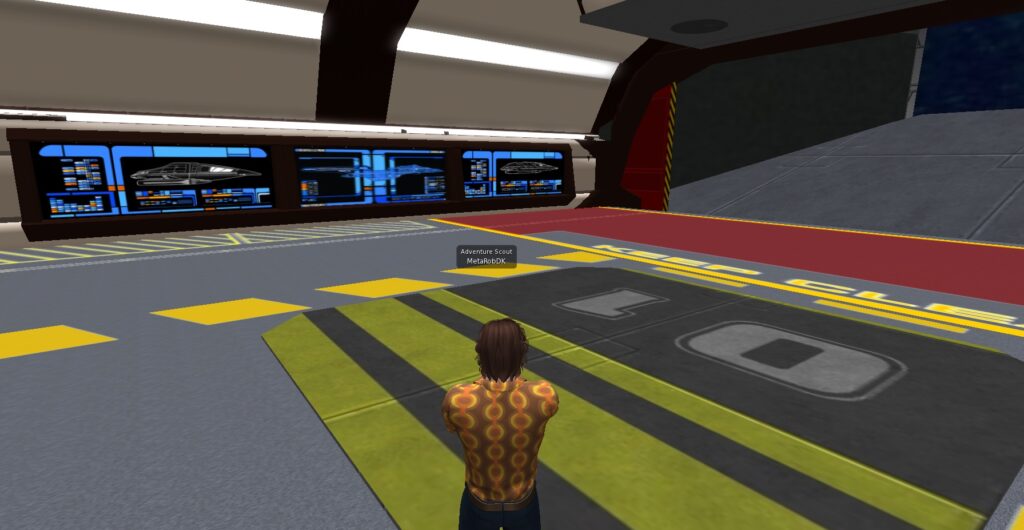
Um, where did I park?
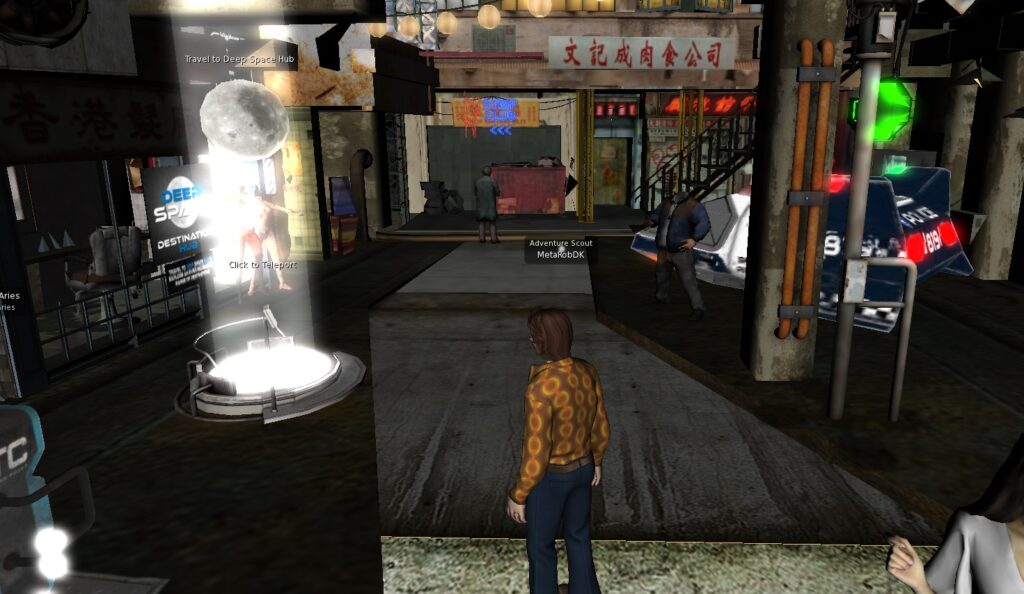
Ever considered relocating to a Blade Runner dystopia?
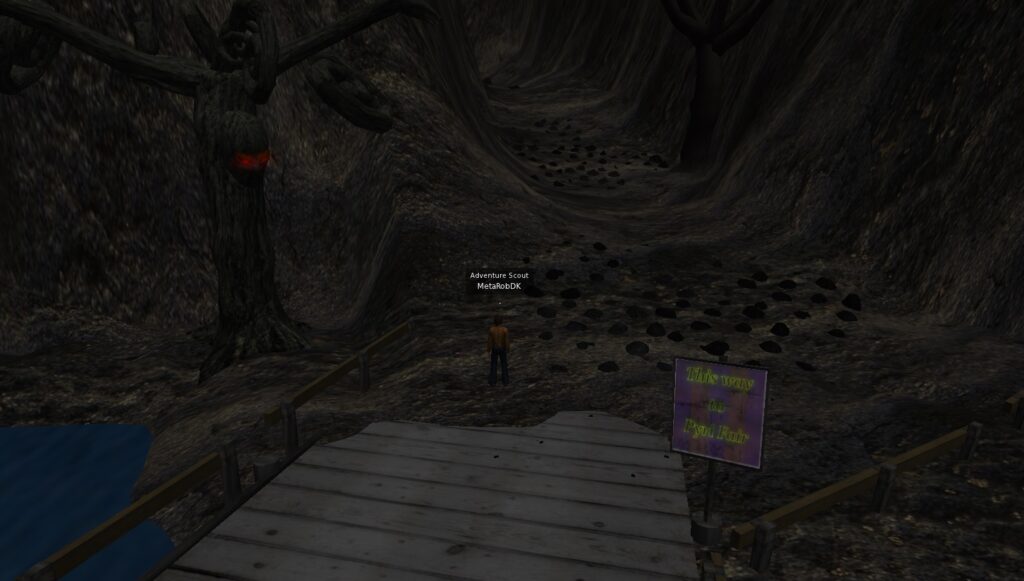
The trees have eyes.
One of the most important early locations for visitors to Second Life is the introductions and portals area. There I find portals to various environments promising everything from games and recreation to LGBT-friendly and even adult. A sign warns me against ‘solicitation’ or ‘idling.’ I do neither.
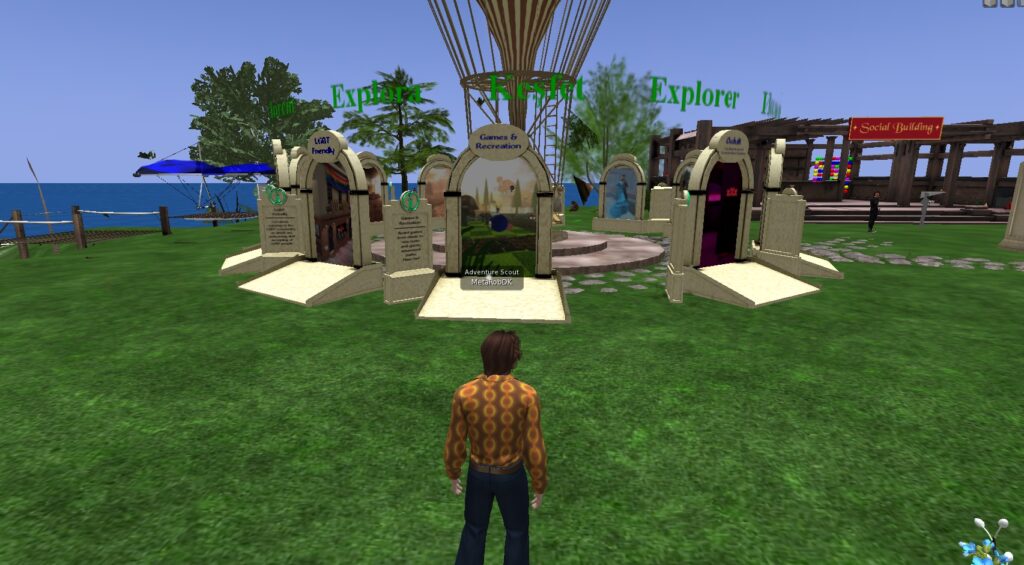
From here I can travel almost anywhere
Friendlies and furries
No metaverse review would be complete without some mention of the community itself. In Second Life, I find that everyone I encounter is friendly and helpful.
The question for some may be “Just how friendly are they?” Nudge nudge, wink wink. Previous excursions in virtual worlds have taught me there are some very thirsty people online, and many find their way into the metaverse seeking ways to satiate themselves.
I am also able to infer from the marketing of Second Life that there is a strong furry community within its virtual borders. (There are 18,000 items for sale in the marketplace listed under the category “furry.”)

Second Life is sometimes weird, say Second Life.
All that said, in my many hours of exploration in Second Life, I only have polite and positive conversations with the people I meet. As far as I can tell Second Life is a varied community of people, interests, and hobbies.
I am left in little doubt that if you want to have X-rated conversations or experiences you can find them, but they aren’t foisted upon you. In that mutual spirit of peace and cooperation, I decide not to intrude on the adult areas of Second Life.
“If they’re not bothering me, why should I bother them?” I think.
I further resolve never to click on the “all clothes” option under the “take off” section of the “my avatar” menu. It may only be an avatar and a mouse click, and I do have a chuckle at the thought, but ultimately, it just doesn’t feel right.
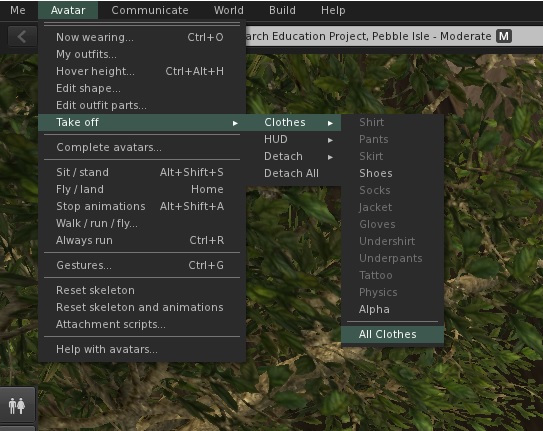
Okay, let’s not do this.
Did Second Life succeed or fail?
Eventually, there comes a point in my Second Life journey where I have to wrap things up.
I begin by looking to the past. Searching through an old email account I discover that I signed up for a Second Life account in 2009. I remember looking around a little in 2009, exploring a bit, and then leaving. I didn’t have a bad time, but nor did I feel the need to return.
My 2023 experience has much the same quality to it. At best Second Life was a positive experience, at worst it was a little bland. doesn’t fulfill any real needs that I have. The biggest problem with Second Life is that it’s a lot like real life – you only get out of it what you put it. And what I want most of all is more time to live my first life.
Last week, in an interview with The Guardian, Second Life CEO Philip Rosedale, who has undoubtedly spent more time thinking about these issues than anyone else, summed up the conundrum perfectly:
“The difficulty of sustaining a second identity is considerable and the number of people willing to do that is smaller than I thought in 2006,” said Rosedale.
That said, Second Life could not have endured for this long if there weren’t people who find the time for it and fulfillment from it. For those people, I am glad that the social metaverse rolled with the punches and persevered.
Second Life is undoubtedly the Rocky Balboa of social metaverses. It hung on in there. For that, I can admire it.
- SEO Powered Content & PR Distribution. Get Amplified Today.
- EVM Finance. Unified Interface for Decentralized Finance. Access Here.
- Quantum Media Group. IR/PR Amplified. Access Here.
- PlatoAiStream. Web3 Data Intelligence. Knowledge Amplified. Access Here.
- Source: https://metanews.com/revisiting-second-life-20-years-later/



